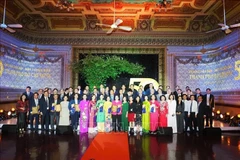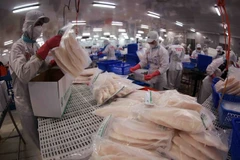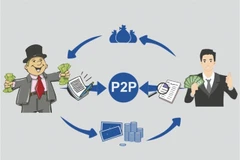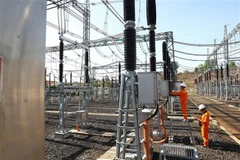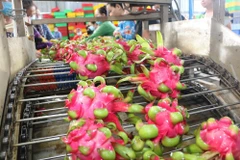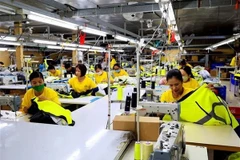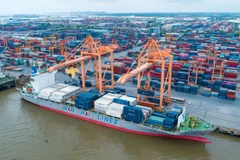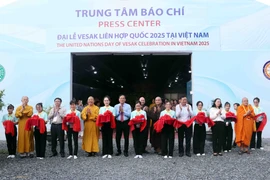Vietnam's tea export ranks fifth in the world in terms of productionbut only 10th in terms of sale prices. It is estimated that Vietnam'stea exports in 2013 will see a significant decline, up to 20 percent dueto the poor quality of its tea products.
According to the Ministry of Agriculture and Rural Development, the teaexport in September reached 13,000 tonnes, worth nearly 21 million USD.In the first nine months of the year, Vietnam exported 101,000 tonnes,earning 161 million USD and representing a 4.2 percent decrease comparedwith the same period last year. It is estimated that tea production andexports in 2013 will reduce by 20 percent year-on-year.
Chairman of the Vietnam Tea Association Doan Anh Tuan said althoughVietnamese tea is still exported to a number of markets such as the US,Belarus and Indonesia, exports to traditional market like the EU arefacing many difficulties such as technical and quality barriers.
There are many reasons for the Vietnamese tea export decline.However, the basic factor is the quality. Therefore, despite Vietnam’sfifth position among the global tea producers, its export revenue ranksonly 10th. While Vietnam exports tea at 1.45 USD per kg, many Europeancountries import the products and re-export them at a price of nearly 10USD per kg.
Dr Nguyen Quoc Vong from theManagement Board of agricultural projects, Ministry of Agriculture andRural Development, said Vietnam’s tea export value per hectare is low,only over 1,200 USD per hectare, much lower than Sri Lanka (5,700 USDper ha) and Kenya (6,000 USD per ha).
Accordingto Nguyen Xuan Hoa, deputy head of the Agro-forestry Processing andSalt Industry Department under the Ministry of Agriculture and RuralDevelopment, to achieve a sustainable tea industry, Vietnam needs topromote coordination in tea production between farmers and farmers,farmers and enterprises.
In addition, it needsto pay attention to the planning of tea growing regions to increaseproductivity, quality and safety of the tea materials; rearrange the teaprocessing plants and ensure that they have a coordination with teamaterial regions and apply the Good Manufacturing Practice (GMP).
In reality, the number of tea processing plants is growing rapidly,resulting in lack of high quality materials as the plants are willing tobuy the materials at all levels of quality. This will discourage thegrowers to produce high-quality tea and therefore result in lowerquality of Vietnamese tea products.
Apart fromlaunching trade promotion and trademark advertising programmes, teaenterprises should also promote domestic consumption as this is a largeand potential market. On the other hand, the tea growing areas meetingVietGap standards remain low, therefore, in order to improve the qualityof material sources, the State should adopt policies to encouragegrowers and enterprises to produce tea following Good AgriculturalPractices (GAP) models.-VNA





